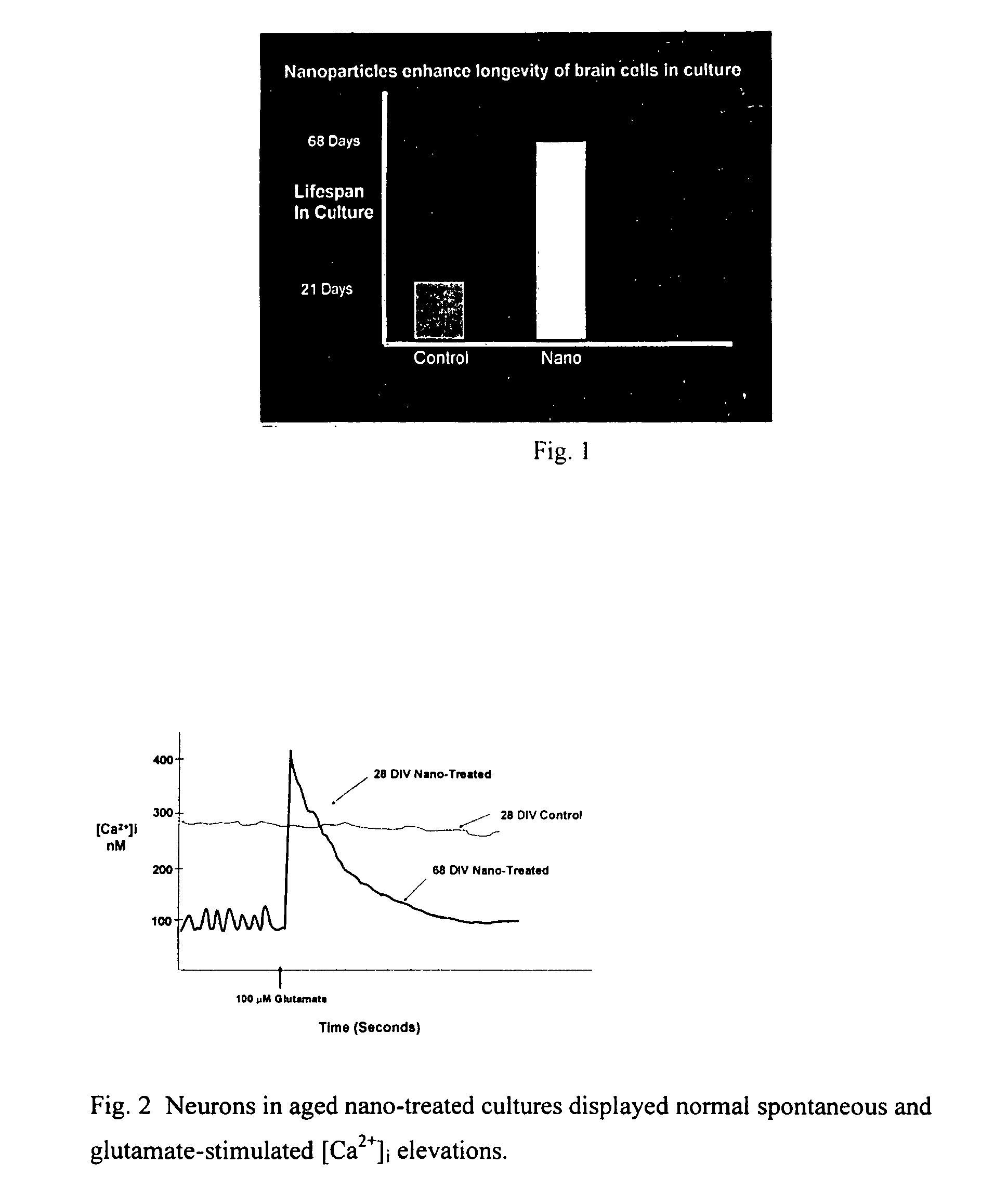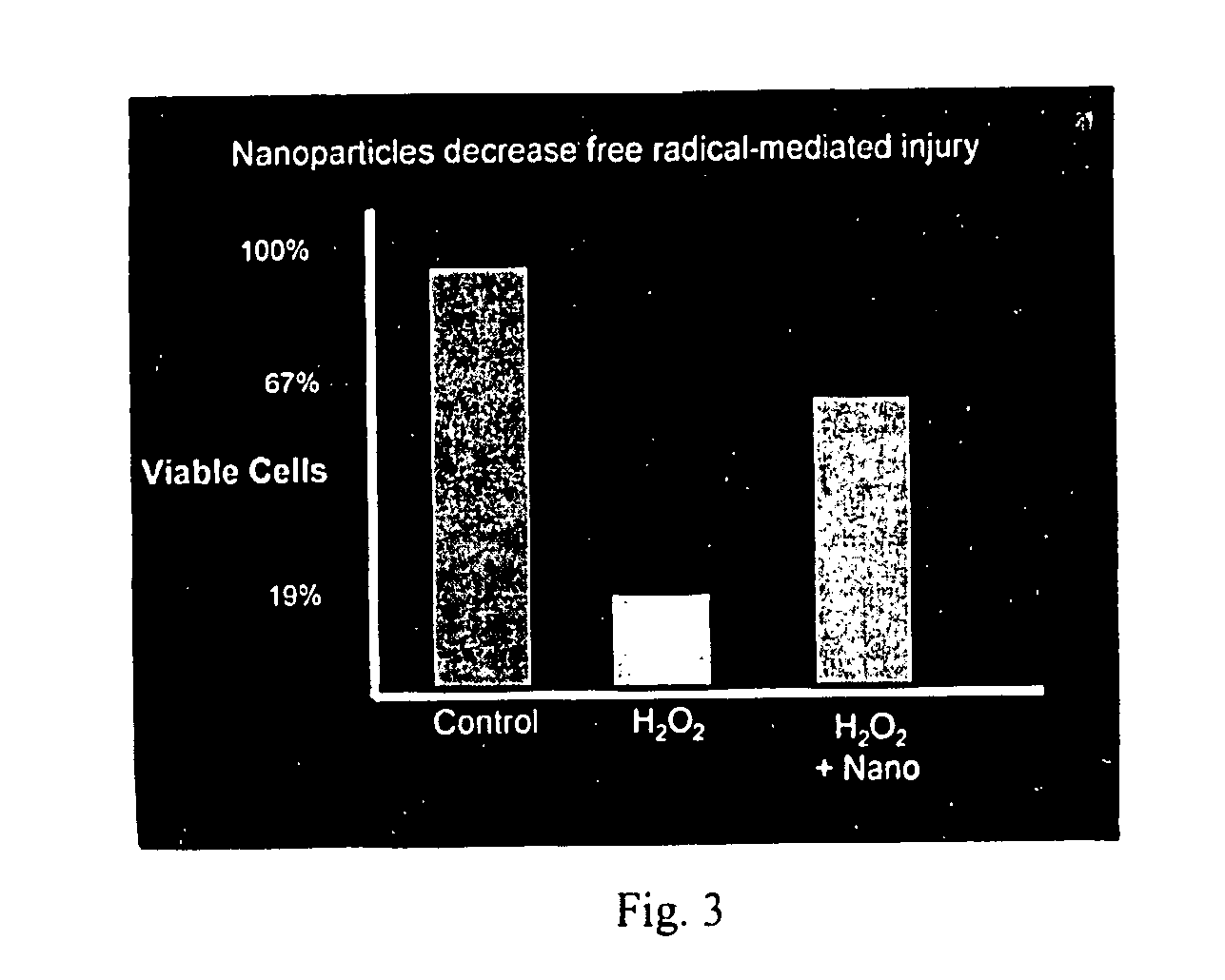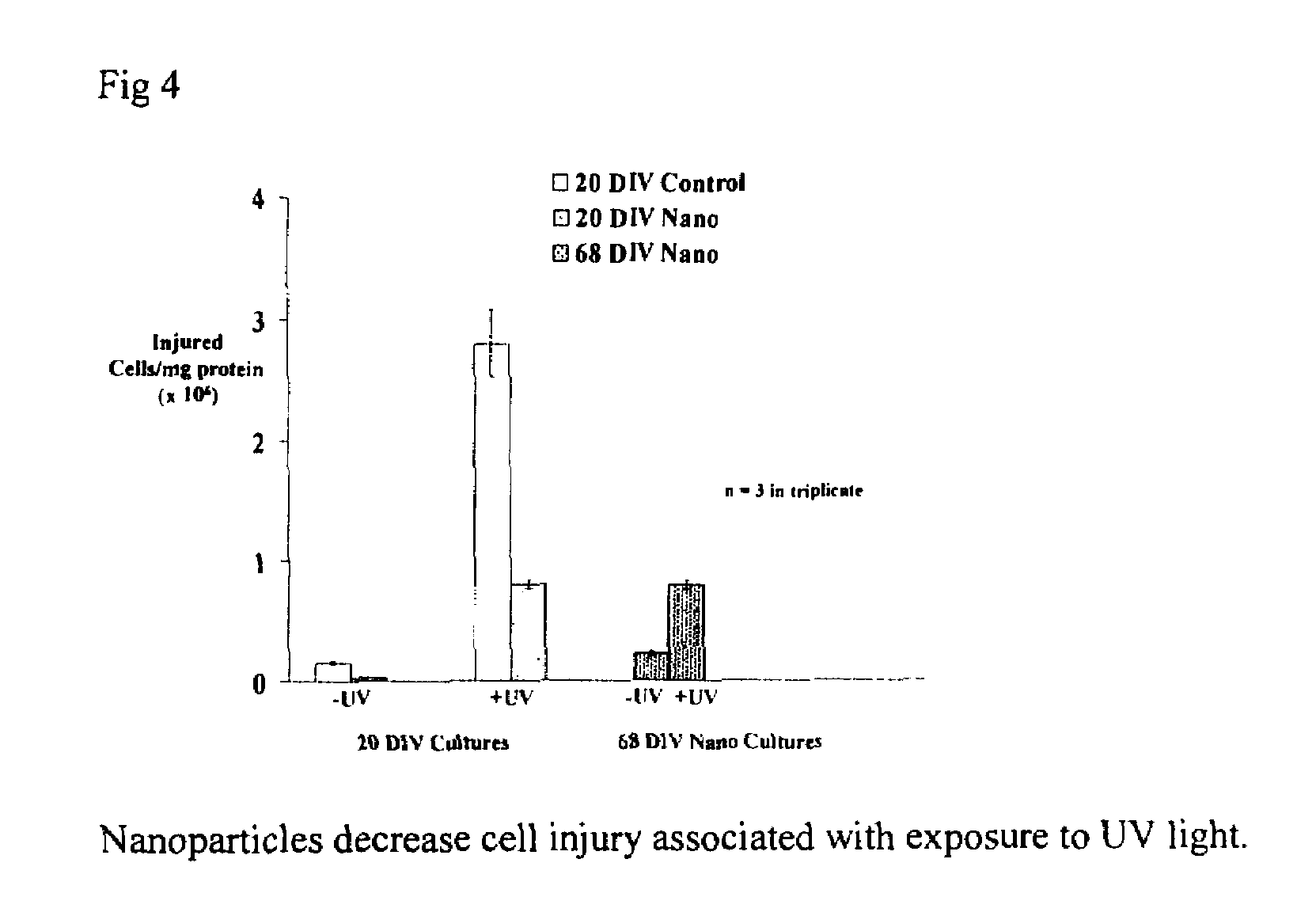Cerium oxide nanoparticles and use in enhancing cell survivability
a technology of nanoparticles and nanoparticles, applied in the field ofcerium oxide nanoparticles, can solve the problems of particle agglomeration, reducing the surface area of nanoparticles, and difficult to achieve stable suspension of non-agglomerated particles, and achieve the effect of enhancing the longevity of living cells
- Summary
- Abstract
- Description
- Claims
- Application Information
AI Technical Summary
Benefits of technology
Problems solved by technology
Method used
Image
Examples
example 1
[0038]The nanoparticles of the invention are prepared as follows:: A stable nano ceria sol is prepared using a micro emulsion technique. The principal of the micro emulsion technique involves the addition of a non-polar chemical (AOT) Na bis(ethylhexyl)sulphosuccinate) (also known as docusate sodium) which, when mixed with aqueous medium containing the cerium, forms a micro-reaction vessel. Thus, the AOT forms a micelle around the cerium particles, and the nanoparticle forms and grows with the surfactant shell. This process can be controlled to produce small (less than 10 nm) particles. By synthesis in the surfactant shell (technically termed reverse micelle) small sized particles are prevented from agglomerating in larger particles, with subsequent loss of activity. Specifically, 0.5-1.0 gm of Ce(NO3)3.6H2O is dissolved in deionized water to make 10 ml of solution. In a separate beaker 3-4 gm of AOT(NNa bis(ethylhexyl)sulphosuccinate) is dissolved in 200 ml of toluene solvent. The ...
PUM
 Login to View More
Login to View More Abstract
Description
Claims
Application Information
 Login to View More
Login to View More - R&D
- Intellectual Property
- Life Sciences
- Materials
- Tech Scout
- Unparalleled Data Quality
- Higher Quality Content
- 60% Fewer Hallucinations
Browse by: Latest US Patents, China's latest patents, Technical Efficacy Thesaurus, Application Domain, Technology Topic, Popular Technical Reports.
© 2025 PatSnap. All rights reserved.Legal|Privacy policy|Modern Slavery Act Transparency Statement|Sitemap|About US| Contact US: help@patsnap.com



